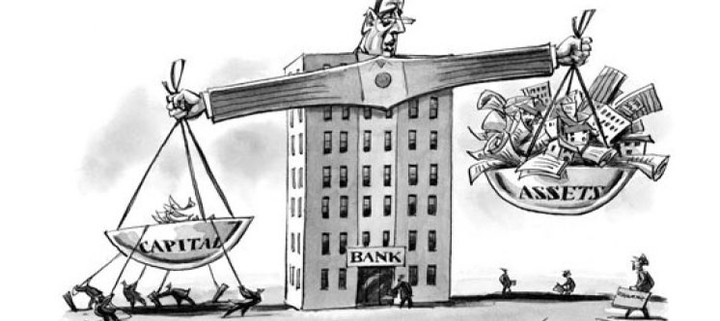Prompt Corrective Action (PCA)?
A Prompt Corrective Action is a qualitative tool introduced by the Reserve Bank of India under which direct action is taken on those banks which has weak capital, to ensure the financial health of a bank is maintained and it does not go bust.
It does so by putting some trigger points that will help in assessing, monitoring, controlling and taking corrective measures on troubled banks. Thus, PCA gives an opportunity to the regulator to engage closely with the bank’s management to secure its financial health.
Need for Prompt Corrective Action!
During the financial crisis of the 1980s and early 1990s, many banks and financial institutions suffered monetary loss around the globe. More than 1,600 commercial and savings banks were either collapsed or given financial assistance in the United States. The increasing losses suffered by them exceeded the US $100 billion.
The need for appropriate supervisory strategy (Prompt Corrective action) arose to avoid banks and financial institutions from such events.
In India, it was first introduced in 2002 during the period of Bimal Jalanas RBI governor and was tightened by RBI governor Urjit Patel in April 2017. It is applicable to all the Scheduled Commercial Banks (SCBs) except RRB. It also does not take into its ambit the payment banks, NBFCs and MUDRA banks.
Prompt Corrective Action Guidelines
Parameters of Prompt corrective action – RBI presented four parameters for evaluating whether the bank is to be brought under the ambit of Prompt corrective action. Each of these parameters graded in terms of their seriousness of the situation and each grade draws a separate set of actions by RBI.
Also, the RBI has defined three risk thresholds for each parameter and linked specific corrective measures to each threshold. The corrective action will depend on the bank risk. Breach of any risk threshold would result in invocation of PCA. If the risk is higher then the corrective action will be tougher for the bank.

The parameters on which banks are judged for prompt corrective action are:
1. CRAR or Capital to Risk Weighted Ratio – The first parameter is Capital to Risk Weighted Ratio. It is a measure of bank’s financial strength. If it is above 9% then the bank is considered as fit to handle any turbulence. If it falls below 9%, then the bank is considered to be in danger zone and an alarm is raised for PCA.

Note:
- The first thresholds for Tier-1 capital - If a bank’s Tier-1 capital falls to between 5.125 and 6.75%.
- The second threshold for Tier-1 capital - If a bank’s Tier-1 capital falls to between 3.625 and 5.125 %.
- The third threshold for Tier-1 capital - If a bank’s Tier-1 capital falls to between 3.625 %.
2. NPA or Non Performing Assets – The second parameter is asset quality which is defined as the net Non Performing Assets of the bank. If the NPA percentage exceeds 6% -9% due to the bad loans then the bank is considered to be a troubled bank and is subjected to prompt corrective action.

Note:
- The first thresholds on the prompt corrective action will be triggered if a bank NPA ratio is 6-9%.
- The second threshold on the prompt corrective action will be triggered if a bank NPA ratio is 9-12%.
- The third threshold on the prompt corrective action will be triggered if a bank NPA ratio is 12% & above.
3. Returns on Assets (ROA)– The third parameter is profitability. Returns on Assets is considered as the benchmark for profitability by RBI. If the returns on assets fall below 0.25% then the bank is subjected to prompt corrective action. It is calculated as ROA = Net Income/ Total Assets.
Note:
- The first threshold on the prompt corrective action will be triggered if a bank has a negative return on assets for two consecutive years.
- The second threshold on the prompt corrective action will be triggered if a bank has a negative return on assets for three consecutive years.
- The third threshold on the prompt corrective action will be triggered if a bank has a negative return on assets for four consecutive years.
4. Leverage Ratio - The fourth parameter is total debt or leverage which measures the financial risk of the bank. If bank Tier-1 leverage ratio is between 3.5 to 4.0 percent then the bank is subjected to prompt corrective action.
Note:
- The first threshold on the prompt corrective action will be triggered if a bank if its leverage is over 25 times its Tier-1 capital.
- The second threshold on the prompt corrective action will be triggered if a bank if its leverage is over 28.6 times its Tier-1 capital.
During the prompt corrective action, a bank is abstained from carrying out any riskier activities such as
- Providing a loan to companies that fall below investment grade.
- Opening new branches as part of newline business and more stress is laid on conserving the bank’s capital and to make it stronger financially.
Also, NPA stocks are reduced by carrying out special measures and any freshly generated NPA is contained. Restrictions are imposed by RBI to prevent any interbank borrowing. Capital, asset quality, profitability, and leverage continue to be the key areas for monitoring in the revised framework and breaching in any threshold triggers the PCA. A bank is subjected to PCA framework based on the audited Annual Financial Results and the Supervisory Assessment carried out by RBI. The PCA framework gives RBI a free hand to curb Bad loans from the banking system.
After all, a strong banking system is needed to improve the economy in terms of better macroeconomic fundamentals such as investment, production, consumption savings, employment and equitable distribution of wealth.
Hey...Great information thanks for sharing such a valuable information
ReplyDeleteUCO Bank
Financial sector
prompt corrective action